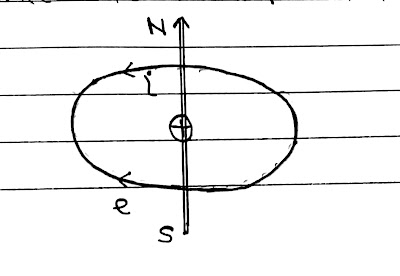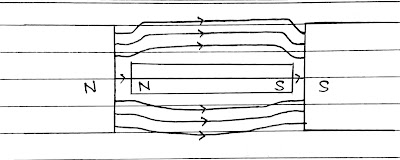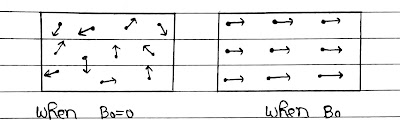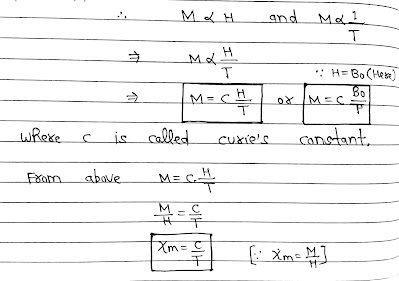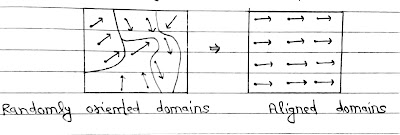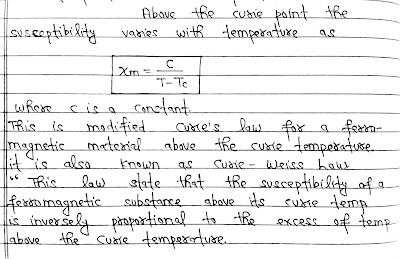Chapter-5|Magnetism and Matter| NCERT 12th Physics:
Magnetic Properties of Materials:
Materials can be classified as diamagnetic, paramagnetic and ferromagnetic on the basis of susceptibility.
Diamagnetism:
Diamagnetic substances are those substances which have a tendency to move from stronger to the weaker part of the external magnetic field.
When a bar of diamagnetic material is placed in an external magnetic field, the field lines are repelled or expelled and the field inside the material is reduced.
Explanation: In atom of some materials like Bi, Cu, Pb the magnetic moments due to different electrons cancel out. In such atoms, electrons occur in pair with one of them revolving clockwise and other anti clockwise around the nucleus. So net magnetic moment of a atom is zero.
Since, net magnetic moment of atom is zero, so there is no atomic dipole. This phenomenon is called diamagnetism and such substances is called diamagnetic substance.
When magnetic field is applied, those electrons having orbital magnetic moment is the same direction slow down. This happens due to induced current in accordance with Lorentz law. Thus the substance developed a net magnetic moment in the direction opposite to that of the applied field and hence repels.
Paramagnetism:
The substances which get weekly magnetised in the direction of external field, when placed in an external magnetic field are called paramagnetic substances. These substances have the tendency to move from a region of weak magnetic field to strong magnetic field. i.e they get weakly attracted to a magnet.
Explanation: The atoms of a paramagnetic material possess a permanent magnetic dipole moment of their own. On account of the ceaseless random motion of the atom, no net magnetisation is seen. But in the presence of an external field B₀, which is strong enough and at low temperature, the individual atomic dipole moment can be made to align and point in the same direction as B₀.
The field lines get concentrated inside the material and the field inside is enhanced.
When placed in a non uniform magnetic field, the bar tends to move from weaker part to the field to the stronger part.
Example: Aluminium, sodium, calcium, oxygen etc.
Curie’s Law:From experiments, it is found that the intensity of magnetisation M of a magnetic material is
(I) Directly proportional to the magnetising field intensity H,
(II) Inversely proportional to the Absolute Temperature T,
Ferromagnetism:
The substances, which get strongly magnetised when placed in an external magnetic field. They have strong tendency to move from a region of weak magnetic field to the strong magnetic field. So they can strongly attracted to a magnet.
Explanation: When a ferromagnetic material is placed in a magnetic field, all the domains align themselves along the direction of the field leading to the strong magnetization of the material along the direction of the field.
In same ferromagnetic materials, the magnetization persists on removal of external magnetic field. Such material are called hard magnetic material or hard ferromagnets.
Example:Aluminium, Nickel, Cobalt and Copper etc.
Curie-Weiss Law:When a ferromagnetic sample is heated, its magnetization decreases due to increase in the randomisation of its domain. At a sufficiently high temperature, the domain structure disintegrate and the ferromagnetic substances become paramagnetic. The temperature at which a ferromagnetic substances become paramagnetic is called Curie temperature or Curie point.
Related

